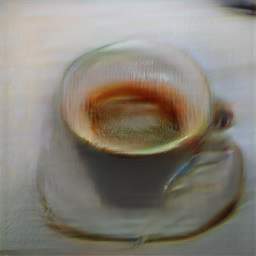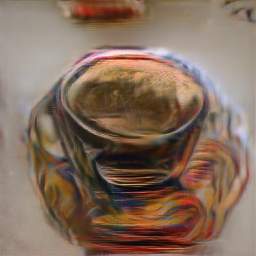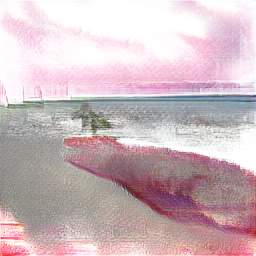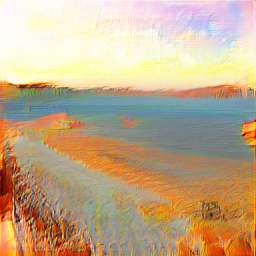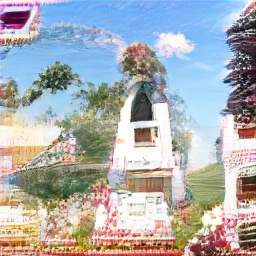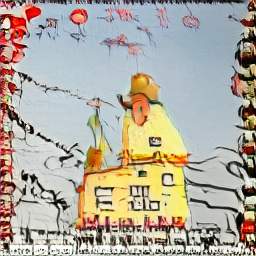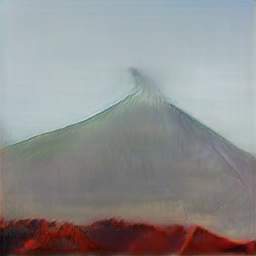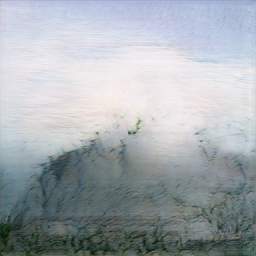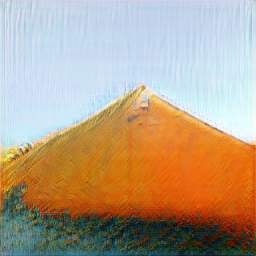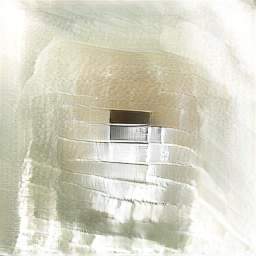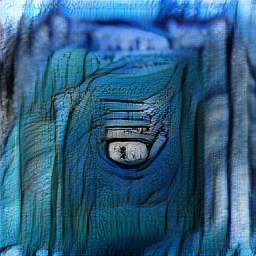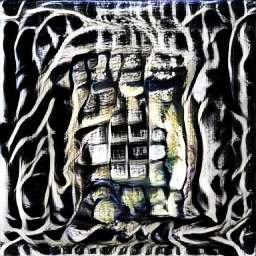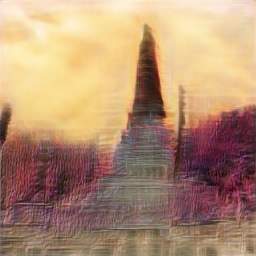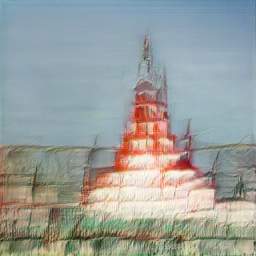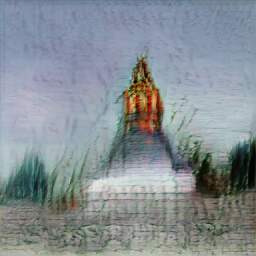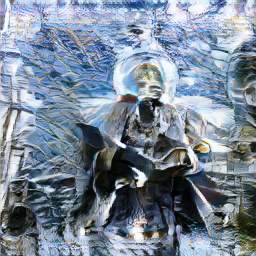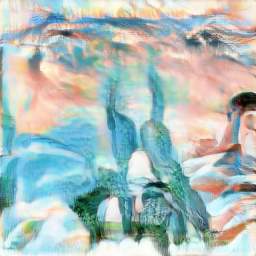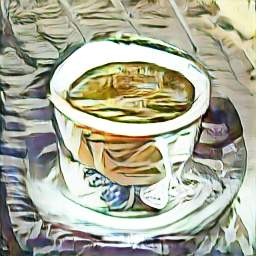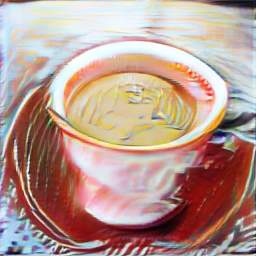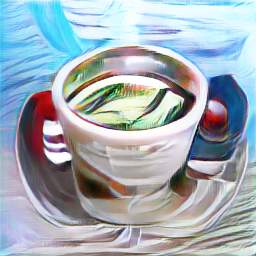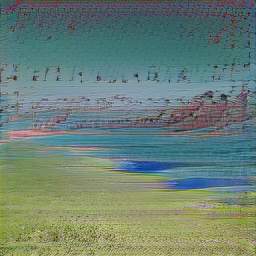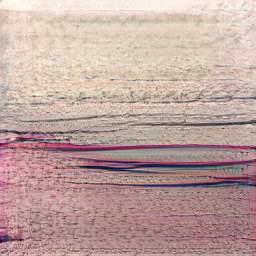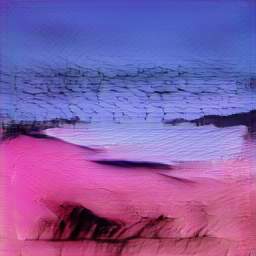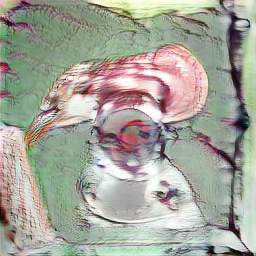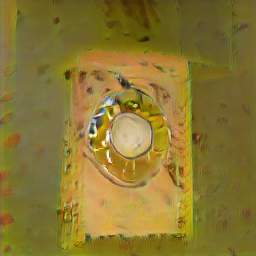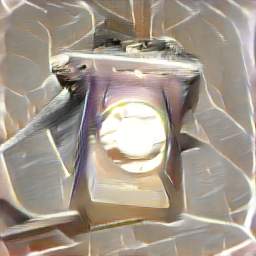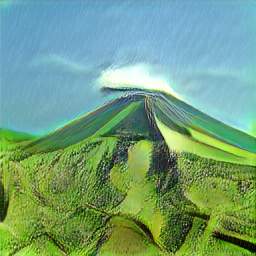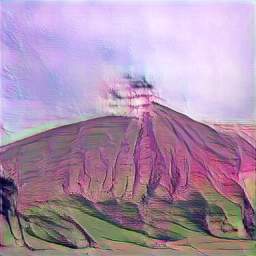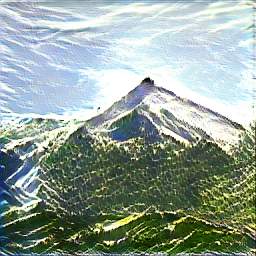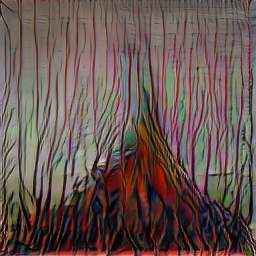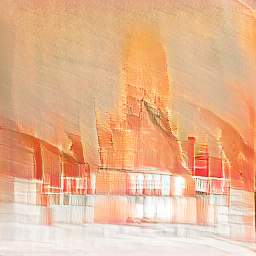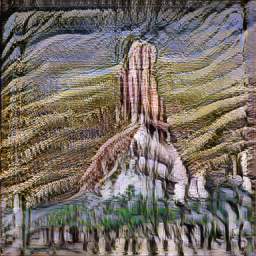neuromorphoid neural networks
Neuromorphoid neural networks are neural networks whose internal connection strengths were scrambled in a specific quasi-random way. Surprisingly, many such networks seem to be able to create human-like art by themselves. These networks do not transform some existing images according to a certain prescribed style — they create the images from scratch. It is important to emphasize that the networks did not at any stage encounter any human- (nor even machine-) made art.

The neuromorphoid neural networks shown currently on this site are transmutations of a single original (ancestral) neural network of the BigGAN variety.
The ancestral neural network was taught how the world looks like by being exposed to the standard Machine Learning ImageNet dataset of over 1 million photos. It learned to generate from scratch photo-realistic images of common objects, plants, animals, structures and sceneries. Example images generated by the original neural network are shown alongside. One can see that these images are strikingly photo-realistic (although with some anomalies on a closer look) but basically as far from a subjective artistic interpretation as possible.
Since none of the transmuted networks were exposed to any additional images, the creative style of the pictures that they generate is not learned from outside but rather reflects the specific modifications of their internal neuronal wiring strengths. In particular, the images generated by these networks are qualitatively different from any images from the original training data — showing that novelty may arise in the neural network context. Yet they still preserve, to a greater or lesser degree, some knowledge about our world inherited from the ancestral neural network.
The quasi-random modifications of the neuronal connections of the original network can be interpreted in diverse ways ranging from modelling an analog of the action of a psychedelic on a human brain, being in a state of deep dream, having a sudden artistic inspiration to creating a population of distinct individuals. Each of these various interpretations can lead to different ways of thinking and intuitions about the observed phenomena.
It is astounding that neural networks which had access only to a photo-realistic world, could at all be transformed by modifying the strengths of neuronal connection without any external image input, so as to produce images which appear “artistic” or aesthetic to humans.
This observation may have far reaching consequences both for the understanding of the neural basis of aesthetics as well as for the theory of Art.
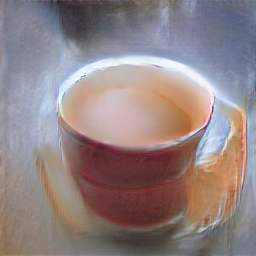
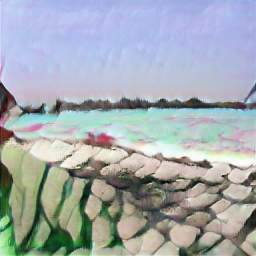
The neuromorphoid neural networks belong to different broad families of constructions which we denote by greek letters: sigma, gamma, tau, kappa and omega. Each family has its own overall creative style, akin to using a specific artistic technique. But the differences among the families extend beyond that and can involve even the semantic content of the images.
In particular, the imagery produced by neuromorphoid neural networks in the sigma and tau families is reminiscent of painting (see Variations and Expressionist). The gamma family produces surreal art, photo-realistic in technique, while often symbolic in content (see Dreams). The omega family is more similar to graphic art (see Graphics), while the kappa family is perhaps the most “alien”, yet still remaining within the confines of human aesthetics (see Abstract).
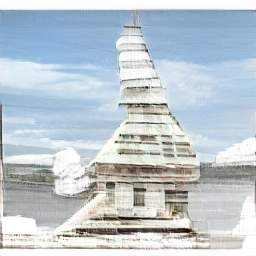
Despite the overall similarities within the broad families, each of the specific neuromorphoid neural networks exhibits its own distinct individual style. Hence, we have given names to the individual neural networks, like sigma_11 or gamma_134, by adding a unique numerical identifier to the family designation.
The differences between the various neural networks can be interpreted as variations in the synaptic strengths of neuronal wirings, analogous to biological variability among individuals. Each neural network can thus be considered as a creative individual, being part of a larger family or population of a particular species. In the (human) eyes of the beholder, some networks certainly seem more “talented” than others. This may be seen as analogous to the wide range of artistic aptitude among humans.
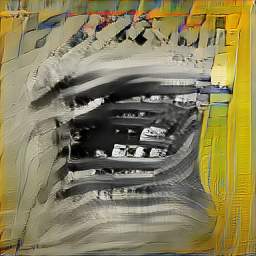
The neuromorphoid neural networks can be asked to depict a given object or scenery but it is really up to the particular neural network how it interprets the topic. Sometimes it indeed produces an artistic rendition of the desired subject, sometimes it may preserve just some overall broad characteristics of the subject and sometimes it may produce something bizarre, difficult to interpret by a human. In the latter case, the requested topic is really just pushing the creativity of the neural network in some specific but unexpected direction. This is especially evident for the images selected for the exhibition Interpretations.
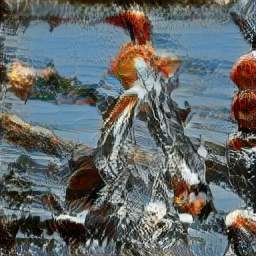
A general property of all these networks, which they share with the ancestral network, is that the overall prescribed subject does not completely determine the generated image. There remains an inherent random variability. This may be understood to be analogous to how a human artist produces a drawing or a painting, with some specific details arising from random impulses, the subconscious, or fleeting impressions...
All the neuromorphoid neural networks whose creations are shown in the five main galleries on this site (Variations, Dreams, Expressionist, Abstract and Graphics), were asked to generate the same set of nine objects or sceneries — stupa, coffee cup, mushroom, lizard, telephone, strawberries, dragonfly, seashore and volcano (their photo-realistic versions, as generated by the ancestral neural network, are shown in the Figure at the begining of this post). This allows one to compare the interpretations of a particular topic by different individual neural networks as well as contrast the various neural network families with each other. The images exhibited in Interpretations and Neuronal Visions were also of this variety, showing how far removed from the original topic the neuromorphoid neural network creations can become...
